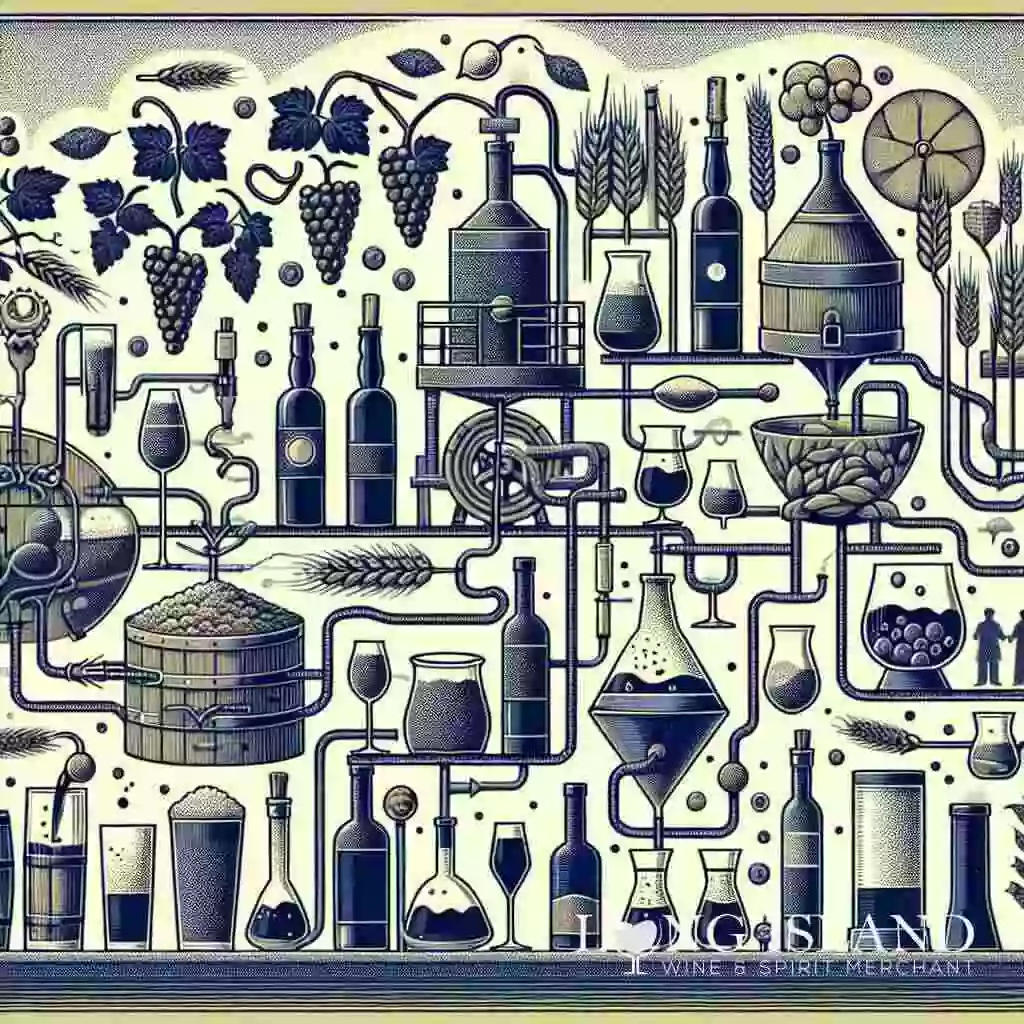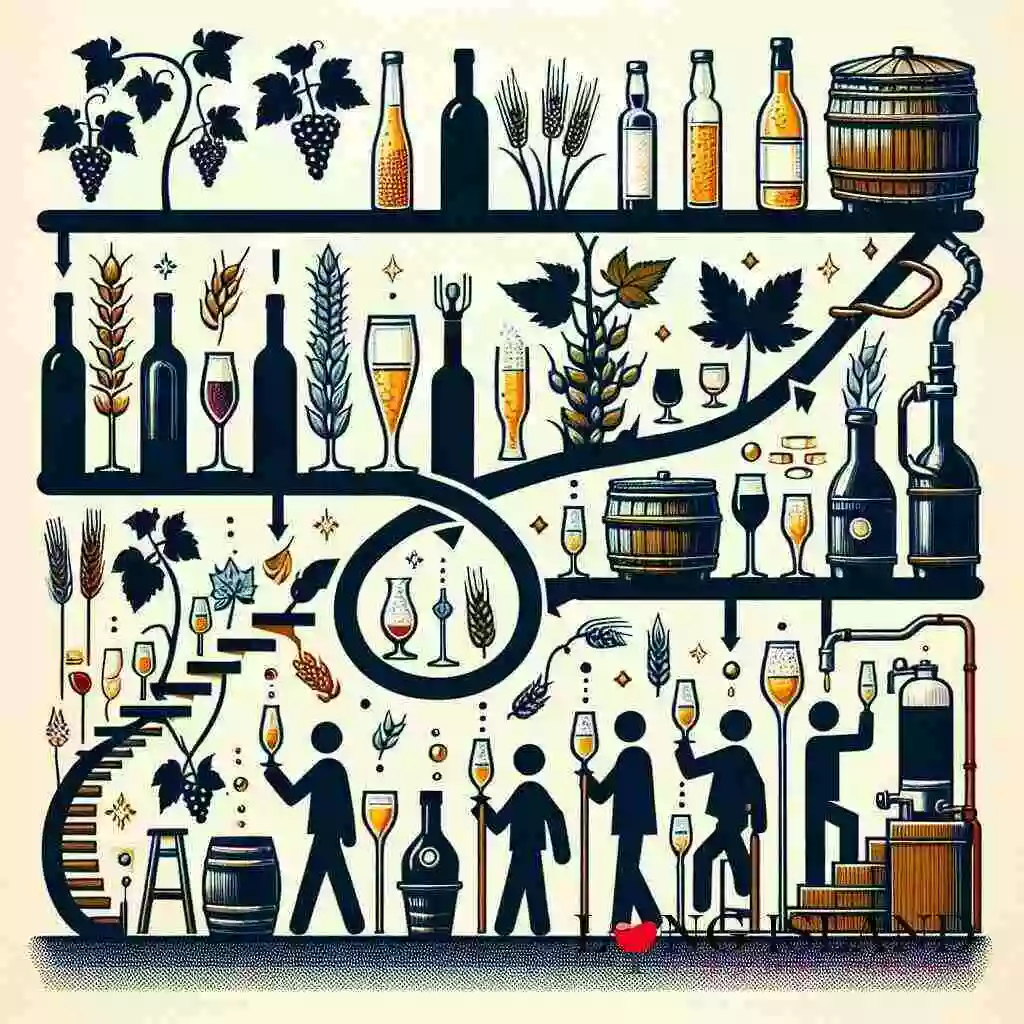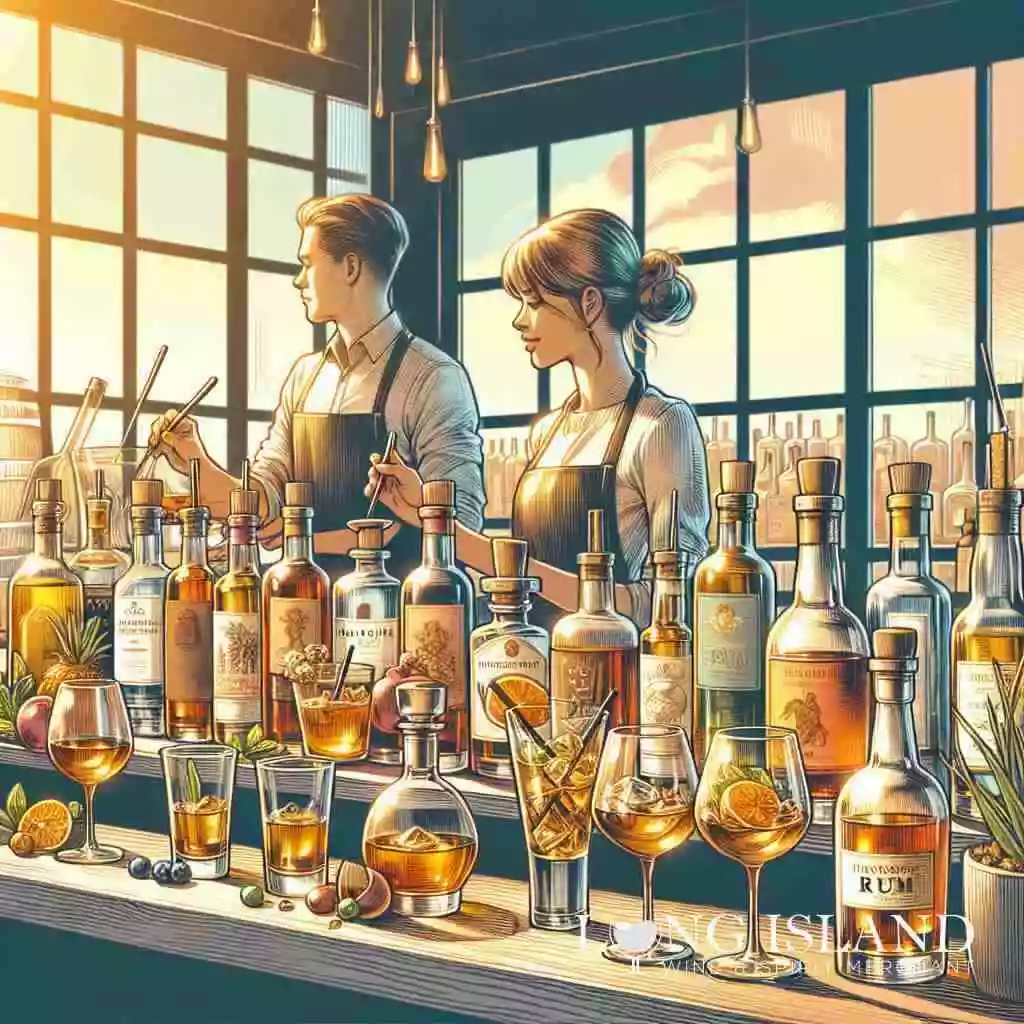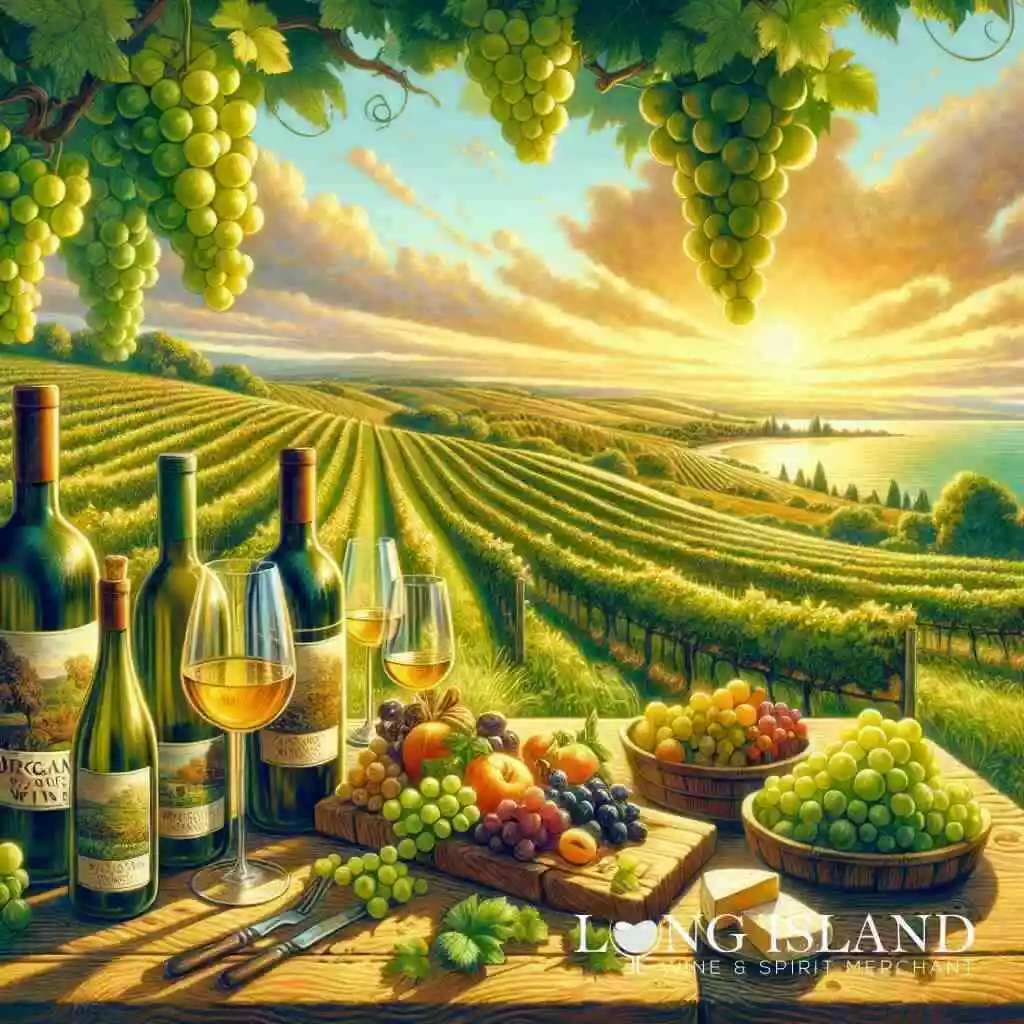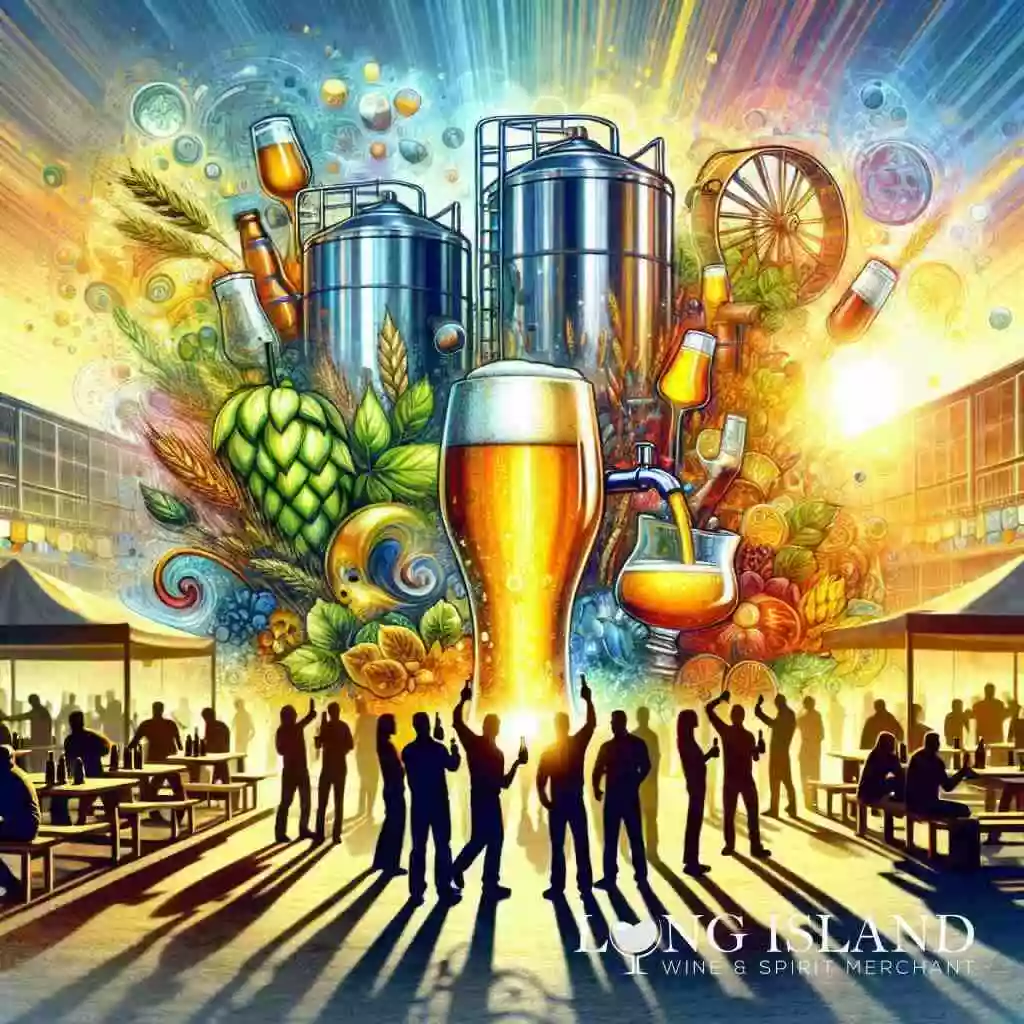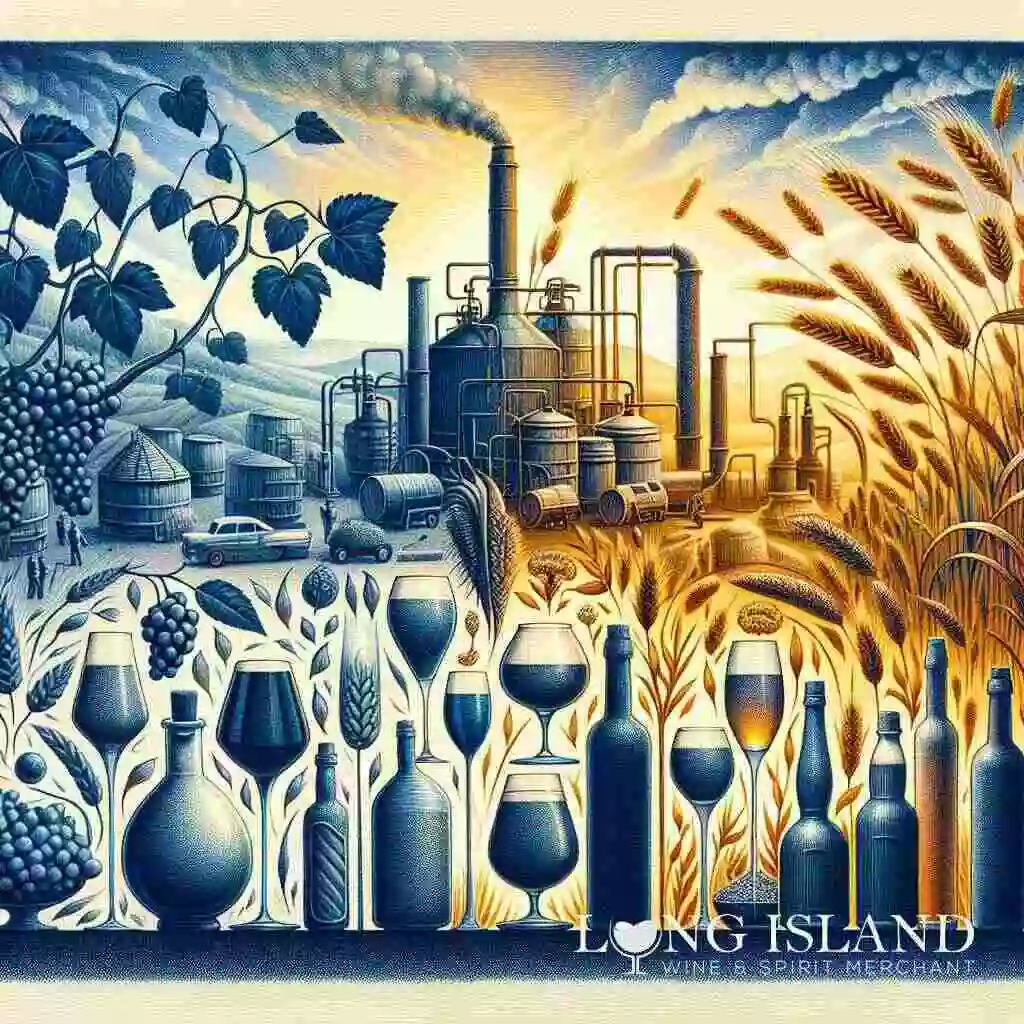
What Is Alcohol? Meaning and Explanation
May 17, 2024
The Essence of Alcohol
What is alcohol
Alcohol, scientifically known as ethanol or ethyl alcohol, is an organic compound that plays a significant role as a psychoactive component in many of the beverages we associate with social gatherings, celebrations, and cultural rituals. It is created through the fermentation of sugars by yeast, a process that converts sugar into alcohol and carbon dioxide, offering a variety of flavors, strengths, and experiences. The presence of alcohol in a drink not only provides its intoxicating effects but also impacts the flavor, aroma, and texture, making it an essential component in both traditional and modern beverages. From the casual beer at a sports event to the fine wine savored at a wedding, alcohol’s versatility makes it a cornerstone in both daily occasions and significant life events.
Ethanol and its significance
Ethanol stands at the center of what we recognize as alcoholic beverages. Its chemical structure allows it to be water-soluble, making it easy to blend with various ingredients, thus giving birth to an infinite array of cocktails and drink recipes. Beyond its consumption, ethanol serves critical functions in both the medical and industrial sectors, as a disinfectant and solvent. However, in the realm of food and drinks, its low freezing point makes it an excellent component for creating liqueurs and other spirits that can be enjoyed in colder climates or as chilled beverages. This unique property, coupled with its preservation qualities, has made ethanol an invaluable substance throughout history, not just in fostering social bonds but in maintaining the integrity of flavors and securing food supplies.
Alcohol in history and culture
Tracing back to ancient civilizations, alcohol has held a prominent role in society, often intertwined with myths, religions, and social practices. The history and culture of alcoholic beverages reveal a deep-rooted legacy that spans across cultures, marking celebrations, rites of passage, and ceremonial offerings to deities. From the ancient Egyptians’ beer to the fine wines of the Roman Empire, alcohol has been celebrated for its ability to bring joy, induce states of relaxation, and serve as a medium for social lubrication. In many cultures, the production of alcoholic beverages has developed into an art form, with recipes and techniques being refined and passed down through generations. This historical significance underscores not just the physiological effects of alcohol but its enduring place in the tapestry of human heritage, embodying the essence of societal evolution and cultural diversity.
Crafting Spirits
How is alcohol made
The process of creating alcohol is a fascinating blend of art and science, a dance between tradition and innovation. At its core, alcohol production involves the fermentation and sometimes distillation of various ingredients, depending on the desired end product. Ingredients such as grains, fruits, and sugars are transformed by yeast or bacteria, converting sugars into ethanol and carbon dioxide. The journey from basic raw materials to the spirits we savor is steeped in history yet driven by modern technological advancements. From the vineyards of Long Island to distilleries around the world, alcohol production is a testament to human ingenuity and our pursuit of pleasure and connection.
Fermentation process
Fermentation is the heart of alcohol production, a natural process where yeast converts sugars into alcohol and carbon dioxide. This magical transformation occurs in an anaerobic environment, meaning it happens without oxygen. The specifics of the fermentation process vary by beverage. For wine, it’s the sugars in grapes that ferment, for beer, it’s malted grains. While the basic principle remains the same, the variations in fermentation methods, yeast strains, and conditions create a staggering variety of flavors and alcohol strengths. The skillful manipulation of these variables is what allows winemakers and brewers on Long Island and beyond to produce each unique beverage, from crisp Long Island wines to robust stouts.
Distillation process
Following fermentation, some alcoholic beverages undergo distillation, a process that separates alcohol from the initial liquid mixture. The principles of distillation rely on the differing boiling points of water and alcohol, alcohol evaporates at a lower temperature. This vaporized alcohol is then collected and condensed back into liquid form, concentrating the alcohol content. Understanding distilled spirits is key to appreciating the craftsmanship behind spirits like whiskey, vodka, and gin. Distillation can remove impurities and create a cleaner, more potent spirit. The artistry of the distiller lies in controlling the distillation process to achieve the desired flavor, potency, and clarity in the final product.
Types of alcohol produced
The types of alcohol produced through fermentation and distillation are as varied as the cultures and tastes that desire them. From the robust and complex flavors of whiskey and scotch to the clear and smooth profiles of vodka and gin, each spirit offers a unique sensory experience. Long Island, with its rich agricultural and viticultural heritage, contributes to this diversity with local wines and spirits that reflect the terroir and craftsmanship of the region. Whether it’s exploring the best wines in Long Island for 2024 or savoring a locally distilled bourbon, the array of alcoholic beverages produced speaks to the versatility and creativity of alcohol makers worldwide.
Navigating the World of Alcoholic Beverages
Difference between spirits and liquors
Understanding the nuanced landscape of alcoholic beverages can often seem daunting, especially when terms like “spirits” and “liquors” are used interchangeably. However, distinguishing between these can enhance your appreciation and knowledge. Spirits essentially refer to alcoholic beverages that have been distilled, resulting in a higher alcohol by volume (ABV). This category includes vodka, gin, rum, whiskey, and tequila, which are celebrated for their clarity, depth, and complexity of flavors. Liquors, on the other hand, are often spirits that have been flavored or sweetened, embodying a more accessible taste profile that includes liqueurs like Baileys, amaro, and limoncello. This subtle yet crucial distinction forms the basis of our understanding and selection of alcoholic beverages, emphasizing the importance of terminology in the rich vocabulary of alcohol.
Understanding alcohol content and ABV
Alcohol by Volume (ABV) is a standard measure used globally to quantify the amount of alcohol (ethanol) contained in an alcoholic beverage. The ABV percentage indicates what portion of the total volume of a liquid is pure alcohol. This number is critical for consumers to grasp, as it directly affects the beverage’s potency and its effects on the individual. Lower ABV drinks like beer and wine allow for casual enjoyment with a lower risk of quick intoxication, while higher ABV spirits such as whiskey and vodka offer a more concentrated experience, often savored in smaller quantities. Familiarizing oneself with these guidelines not only ensures a safer drinking experience but also aids in selecting the right beverage for the occasion. For more insights on ABV and responsible consumption, exploring resources and guidelines from reputable sources can be extremely beneficial, including detailed guides on alcohol content.
Popular alcoholic drinks and their origins
The world of alcoholic drinks is as diverse and rich in history as the cultures that created them. Every popular alcoholic beverage, from the humble beer to the sophisticated champagne, carries with it a story of its origins and evolution. Beer, for instance, is believed to have roots dating back to the early Neolithic period, making it one of the oldest prepared beverages globally. Wine’s heritage, richly intertwined with history, speaks volumes about its significance in rituals and society across ancient civilizations. The origins of distilled spirits trace back to medieval times, with practices of distillation spreading from the realms of alchemy into brewing. Each of these beloved beverages, whether it be a smooth whiskey, a crisp cider, or an aromatic gin, has been refined and celebrated over centuries, embedding itself into our social fabric and dining traditions. The exploration of these drinks and their histories not only enriches our drinking experience but also connects us with the past, highlighting the integral role alcohol has played across cultures and epochs.
Choosing the right alcohol for your palate
Selecting the perfect alcoholic beverage to suit your tastes can be a delightful journey of discovery, especially when armed with knowledge about the types of alcohol available and an understanding of your preferences. For those new to the world of alcohol, starting with lower ABV drinks like wines and beers might be advisable, enabling an appreciation for the subtleties of flavor without overwhelming the palate. Experimenting with different grape varietals or hop profiles can also pave the way to recognizing and refining your preferences. Connoisseurs aiming to expand their horizons might explore craft spirits or international specialties, delving into the nuanced worlds of artisanal distilleries or traditional beverages from around the globe. Taking advantage of tasting events, such as Wine Tasting Experiences in Long Island, or consulting with experts at your local Long Island Alcohol Shop can offer guidance and insights, making the process of choosing your next favorite drink both educational and enjoyable.
Responsible Enjoyment
Alcohol consumption guidelines
Responsible drinking starts with understanding and adhering to alcohol consumption guidelines. These guidelines are designed to inform the public of how to enjoy alcohol in moderation, thus minimizing health risks. According to health experts, moderate drinking typically means up to one drink a day for women and up to two drinks a day for men. Yet, “one drink” can vary significantly depending on the type of alcohol, and its ABV content concept is often misunderstood. For the residents and visitors of Long Island, familiarizing oneself with these standards, especially when experiencing the diverse selection from the Long Island Alcohol Shop, is crucial. It’s about balancing the joy of exploring Long Island spirits and wines with the importance of maintaining health and well-being.
Health effects of alcohol
The health effects of alcohol can be dual-edged. On one hand, moderate alcohol consumption has been associated with certain health benefits, such as a potentially reduced risk of heart disease and ischemic stroke. On the other hand, excessive drinking can lead to a slew of health problems, including liver disease, heart problems, certain cancers, and addiction. The key lies in moderation and being aware of one’s limits and health conditions. Resources such as those provided by Long Island Alcohol Shop can offer insights into the alcohol content of various beverages, helping consumers make informed choices. Furthermore, understanding the importance of pacing, eating before drinking, and staying hydrated can mitigate negative health impacts.
The social aspects of drinking
Alcohol has played a central role in socialization across cultures for centuries, acting as a social lubricant that can enhance the joy of gatherings and celebrations. In places like Long Island, where the wine and spirits industry is vibrant, drinking can be an integral part of the social fabric. From wine tastings at the Long Island Wine & Spirit Merchant at Northgate to backyard barbecues with local brews, alcohol can foster camaraderie and a sense of community. However, the social dynamics around drinking also necessitate awareness and responsibility when to say no, ensuring friends don’t drink and drive, and creating inclusive environments for those who abstain.
Alcohol laws and age for alcohol consumption
The legal framework surrounding alcohol consumption, including the minimum drinking age, varies significantly from one region to another. In the United States, the legal drinking age is 21, a regulation that is federally enforced but can have state-specific nuances, such as exceptions for private, non-alcohol-selling premises or during religious occasions. Understanding these laws, especially for international visitors or those new to Long Island, is essential. Websites dedicated to navigating these legal landscapes, such as Legal Drinking Age by Region, provide valuable resources for ensuring compliance with the law while enjoying the rich alcoholic beverage culture of Long Island and beyond. It is part of being a responsible member of the community, respecting the guidelines set forth for public safety and well-being.
Concluding Sips
Embracing the heritage of alcohol
The journey through the world of alcohol is as rich and diverse as the tapestry of global cultures itself. To embrace the heritage of alcohol is to understand its origins, spanning from ancient civilizations to modern-day innovations. Each sip tells a story of cultivation, tradition, and human connection. The production of alcohol, whether it be wine, beer, or spirits, is deeply rooted in history, reflecting the agricultural and societal advances of our ancestors. At the Long Island Alcohol Store, we honor this heritage by curating a selection that highlights the best of Long Island’s bounty and beyond. The appreciation of alcohol’s history enhances the enjoyment, allowing us to sip not just on a beverage, but on the legacy of human civilization. For those keen to dive deeper, a visit to our Blog on Alcoholic Drinks Education can enrich your understanding and appreciation.
Responsible drinking and its importance
The enjoyment of alcohol comes with a responsibility to oneself and society. Responsible drinking is fundamental for maintaining health, safety, and social harmony. Understanding and adhering to guidelines for moderate consumption can prevent health risks and enhance personal well-being. At Long Island Alcohol Store, we advocate for informed choices that balance the pleasures of alcohol with mindfulness of its effects. This includes recognizing when to limit consumption, respecting legal drinking ages, and ensuring the safety of oneself and others. In our community, whether you’re enjoying a glass of wine from the Long Island Wine & Spirit Merchant or sharing a bottle of our finest spirits at home, doing so responsibly is paramount. For helpful guidelines, explore Healthy Alcohol Consumption Tips to ensure every celebration is both joyful and safe.
Exploring new tastes with Long Island Alcohol Store
The world of alcoholic beverages is a vast and ever-evolving landscape, ripe for exploration. Whether you’re a seasoned connoisseur or new to the nuances of alcohol, the Long Island Alcohol Store is your gateway to discovery. With a diverse range of Long Island wines, spirits, and beyond, our selection is curated to inspire your palate and expand your horizons. From the finest locally-produced wines to globally renowned spirits, our collection invites you to journey through flavors, regions, and traditions. Take our Long Island Wine Taste Quiz to tailor your exploration to your preferences, or surprise yourself with something entirely new. Our expert team is here to guide you through the process, making every selection a step towards a new favorite. Start your exploration today at Long Island Alcohol Store, where the world of fine alcohol awaits at your fingertips.
Frequently Asked Questions
Question: What is the significance of understanding the fermentation and distillation processes described in the “What Is Alcohol? Meaning and Explanation” blog?
Answer: Understanding the fermentation and distillation processes is crucial because it gives insight into the craft and science behind the creation of alcoholic beverages. At Long Island Alcohol Store, we appreciate the mastery involved in transforming simple ingredients into a wide array of spirits and wines. Recognizing the journey from grain or grape to glass enhances the appreciation of each sip, and selecting a beverage becomes a more informed and meaningful decision. It contributes to a deeper respect for the artisans and the tradition of alcohol production, embodying both culture and history in the process. By choosing Long Island Alcohol, you’re choosing to support a rich heritage of craftsmanship reflected in our curated selection of Long Island wine, spirits, and beyond.
Question: Can you explain the difference between spirits and liquors, and how does Long Island Alcohol Store cater to enthusiasts of both?
Answer: Spirits and liquors, while often used interchangeably, have distinct differences primarily based on their production methods and flavor profiles. Spirits refer to distilled alcoholic beverages with a higher ABV, such as vodka, whiskey, and gin, which are known for their clarity and depth of flavor. Liquors, on the other hand, are usually spirits that have been flavored and sweetened, like liqueurs and cream-based drinks, offering a more accessible taste. Long Island Alcohol Store caters to enthusiasts of both by providing a vast selection ranging from the finest Long Island spirits known for their intricate distillation processes to a variety of liquors including exotic amaros, sweet vermouths, and creamy Baileys. Our expertise and expansive inventory ensure that both spirit aficionados and liquor enthusiasts can find something to suit their palate, whether they seek the robustness of a good bourbon or the sweet complexity of a crafted liqueur.
Question: How do alcohol content and ABV affect the choice of alcoholic beverages available at Long Island Alcohol Store?
Answer: Alcohol content, measured as ABV (alcohol by volume), plays a significant role in defining the character and consumption experience of alcoholic beverages. At Long Island Alcohol Store, we believe in providing a comprehensive education about ABV as it directly influences the decision-making process of our customers. Lower ABV options like wines and beers are perfect for those seeking a lighter, more gradual enjoyment, enabling our customers to savor the rich terroir of Long Island wine or the craftsmanship of local and international beers. Conversely, our selection of spirits offers a higher ABV, catering to those who appreciate a more concentrated flavor or are interested in mixology and the creation of cocktails. Understanding ABV allows us to guide customers towards choices that best align with their preferences and occasions, ensuring a satisfying and responsible enjoyment of our offerings.
Question: In what ways does Long Island Alcohol Store advocate for responsible drinking and provide information on alcohol consumption guidelines?
Answer: Long Island Alcohol Store is deeply committed to promoting responsible drinking among our customers. We recognize the importance of moderation and the awareness of alcohol’s effects on health. Through our website, educational blog posts, and in-store consultations, we provide valuable insights into alcohol consumption guidelines, emphasizing the significance of understanding one’s limits and the impact of ABV on the body. Furthermore, we offer resources and tips for enjoying alcohol healthily and enjoyably, including pairing recommendations, serving sizes, and suggestions for non-alcoholic alternatives for those who choose not to drink. Our dedication to responsible consumption is reflected in our carefully curated selection, ensuring that each customer can find a beverage that suits their lifestyle and preferences while adhering to guidelines for safe and enjoyable drinking. For more information on how to enjoy our products responsibly, take a look at What Is a Handle of Alcohol in Long Island?
Question: What initiatives does Long Island Alcohol Store have in place to educate customers on the history and culture of alcohol?
Answer: At Long Island Alcohol Store, we are passionate about educating our customers on the rich history and diverse culture surrounding alcohol. We believe that every bottle has a story, from the artisanal methods used in its creation to its cultural significance. We host a variety of tasting events and educational seminars at our Commack, NY location, led by industry experts who share their knowledge on the heritage of different spirits and wines. To learn more about the types of events we offer, you can visit our Ultimate Guide to Long Island Wine Tasting 2024. Additionally, our blog features articles on the history of alcohol, profiles on traditional and innovative alcohol production methods, and stories highlighting the cultural rituals and celebrations associated with different beverages. These initiatives are designed to connect our customers with the broader narrative of alcohol, fostering a deep appreciation and understanding that enhances their overall experience.
